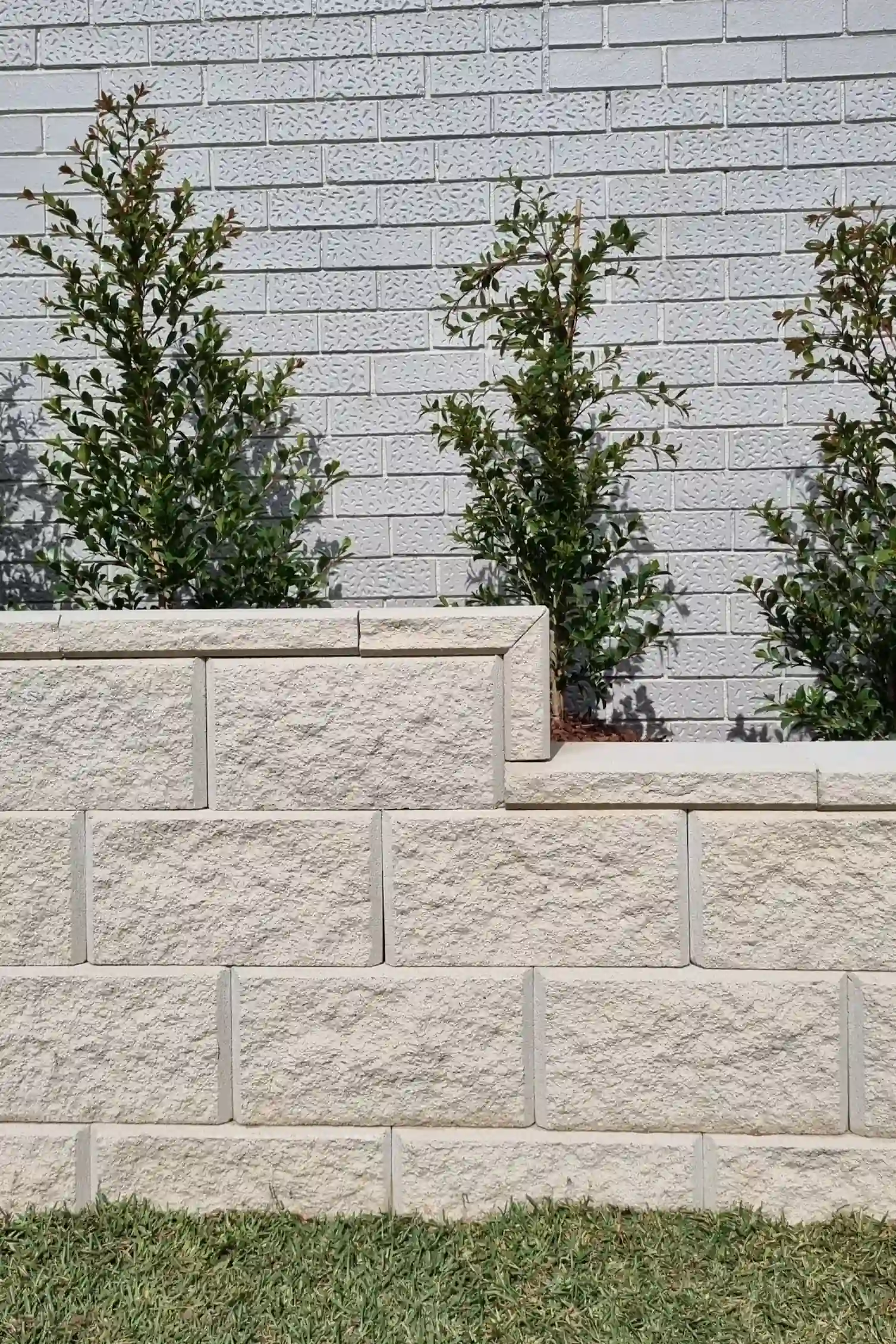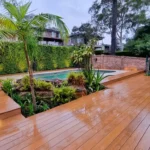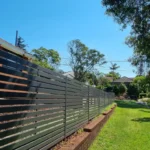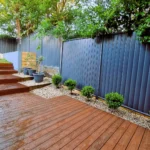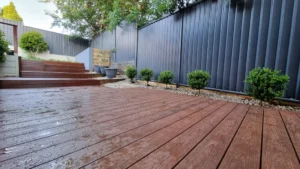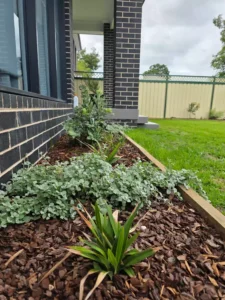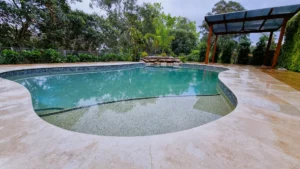What Is a Retaining Wall?
A retaining wall is a structure built to hold back soil, create level surfaces, and manage sloped terrain. Whether you’re wondering what is a retaining wall or looking to build one in your own backyard, these walls offer both structural support and visual appeal. From stone wall retaining walls to corten steel retaining walls, they come in many styles to suit every landscape.
Choosing the Right Material
The materials you choose will impact the wall’s cost, durability, and overall appearance. Here are common types:
- Concrete retaining wall blocks: Popular for DIY projects due to their durability and easy stacking. A concrete block retaining wall is ideal for long-term strength.
- Timber retaining walls: Great for a natural look and commonly built with treated pine retaining wall sleepers. Ideal for sloped backyards and cost-effective.
- Sandstone retaining wall blocks: Provide a classic, earthy look but can be more expensive. Suitable for upscale or traditional gardens.
- Corten steel retaining wall: Sleek and modern. Corten retaining wall materials are weather-resistant and develop a rust-like patina over time.
- Brick retaining wall: Offers charm and character, especially for heritage-style homes.
- Concrete sleeper retaining walls: Strong, long-lasting, and suitable for higher walls. Concrete for retaining walls ensures stability and low maintenance.
Want a low-cost option? A cheap retaining wall can be built using timber or repurposed blocks, but keep longevity in mind.
Retaining Wall Design Considerations
Effective retaining wall design ensures the structure holds up over time. Things to factor in:
- Soil type and compaction
- Proper drainage using gravel and a perforated drain pipe
- Accurate wall height planning (taller walls may need engineering)
- Environmental harmony with garden aesthetics
Drainage must be accounted for during design, especially if the wall exceeds two feet in height or is built on a slope. Use ¾-inch drainage gravel directly behind the wall and consider installing a perforated drain pipe at the base if your wall is over 2.5 feet high or in a wet area.
Equally important is a solid foundation—typically a 6-inch compacted gravel base—to ensure stability. Loose or sandy soils require additional reinforcement or wider bases for safety.
Whether you’re going for a stone retaining wall, a tiered block retaining wall, or using sleepers as a retaining wall, design plays a key role in performance and visual impact.
Always check local codes and underground utility maps before excavation to avoid fines or damage.
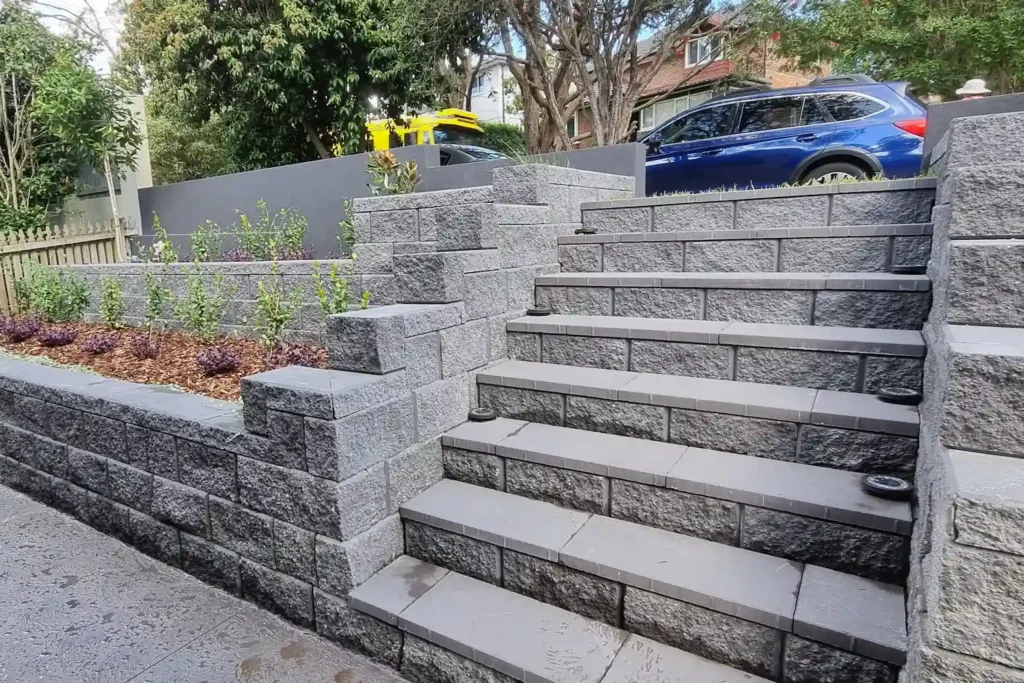
How to Build a Retaining Wall (DIY Guide)
Many people search for how to build a retaining wall, and the good news is it’s a manageable DIY project with the right preparation. Here’s a step-by-step:
- Define and mark the wall area
- Excavate a trench wide and deep enough for the base. Begin by marking the wall outline. Dig a trench for the foundation, ensuring it is deep enough for stability.
- Add a compacted gravel base (minimum 150mm or 6 inches). Always start with a solid base, integrate proper drainage, and never compromise on levelling the first course.
- Install drainage: Add ¾-inch gravel and a sloped perforated pipe
- Lay the first course of blocks or sleepers, ensuring perfect levelling
- Stack rows, backfilling with gravel and soil as you go. Use a hand tamper or 2×4 to pack material behind each layer.
- Finish with adhesive and topsoil or caps for a neat look
Planning to build with timber? Learn how to build a sleeper retaining wall using vertical posts and galvanised screws for strength. Sleepers should be set in at least one-third of their height below ground level for structural integrity. If you’re working with concrete sleepers, follow standard structural guidelines.
A stepped design is not only visually appealing but also structurally superior on sloped terrain.
How to Build a Sleeper Retaining Wall
Timber or concrete sleeper retaining walls are among the easiest to DIY. Here’s how to build a retaining wall with sleepers:
- Dig a trench and add drainage gravel
- Set sleepers one-third into the ground
- Ensure the first sleeper row is level
- Secure upper rows with screws or brackets
- For higher walls, add vertical posts in concrete
Using retaining wall sleepers offers a budget-friendly way to transform a garden.
Retaining Wall Cost: What to Expect
A common question is how much does a retaining wall cost or even how much should a retaining wall cost? Several factors affect retaining wall prices:
- Material used (e.g., timber, sandstone, concrete block)
- Wall height and length
- Site conditions (slopes, drainage needs)
- DIY vs professional installation
Example: A DIY concrete block wall measuring 15 metres long and 900mm high might cost just over $1,000 in materials alone.
A small DIY retaining wall with cheap retaining wall materials like timber may cost under $1,000. Larger concrete sleeper retaining walls or stone retaining walls can cost several thousand dollars. For exact quotes, search retaining walls near me to compare local installers.
DIY vs Professional Installation
Wondering whether to hire help or go the do it yourself retaining wall route? Consider:
- Your skills and tools
- Project size and complexity
- Time availability
- Budget limits
DIY is ideal for small cement retaining wall or block retaining wall projects, while professionals are best for tall, engineered walls.
Inspiring Retaining Wall Ideas
Here are some retaining wall ideas to elevate your outdoor space:
- A concrete wall retaining garden bed with lights
- Tiered stone retaining walls with steps
- A corten steel retaining wall with native plantings
- Sleepers as a retaining wall for veggie beds
- Brick retaining wall curves around a patio
Mix materials for a custom look and incorporate seating or planters for multi-purpose use.
Final Tips for a Long-Lasting Retaining Wall
No matter your design or material choice, a well-built retaining wall needs:
- A solid base
- Proper drainage
- Quality backfill
- Occasional maintenance (clearing debris, re-gluing caps)
With the right approach, your retaining wall can last for decades — functional, beautiful, and built to suit your garden.

